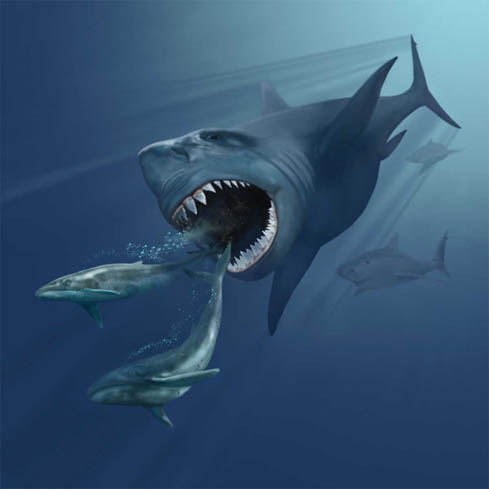
Megalodon (Carcharocles megalodon) is the largest shark, at a magnificent maximum length of 18 meters (59 feet), to ever have dwelled in the oceans. We know primarily about Megalodon’s existence through fossilized teeth. Megalodon’s maximum size is inferred because we do not actually have a whole preserved Megalodon. Using a mathematical relationship between body size and tooth size for Great Whites, we can estimate Megalodon’s size from its teeth. In fact, my former graduate student Meghan Balk, with Catalina Pimiento, used this method with oodles of Megalodon teeth to show that Megalodon did not change much in size when it did exist. But I digress.
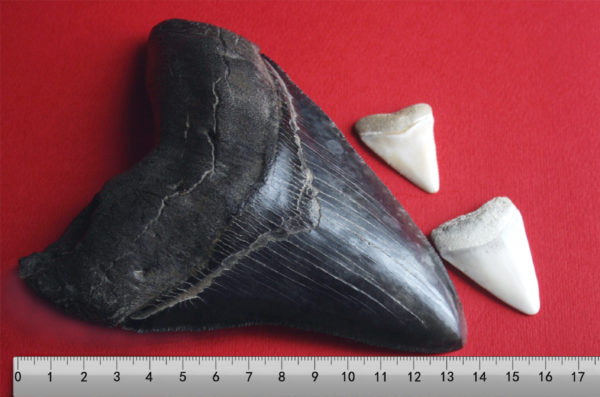
A recent Twitter exchange made me realize that both some people think Megalodon still exists and a really good write up on how we know Megalodon actually does not exist is not on the interwebs. So in a numbered list, here we go.
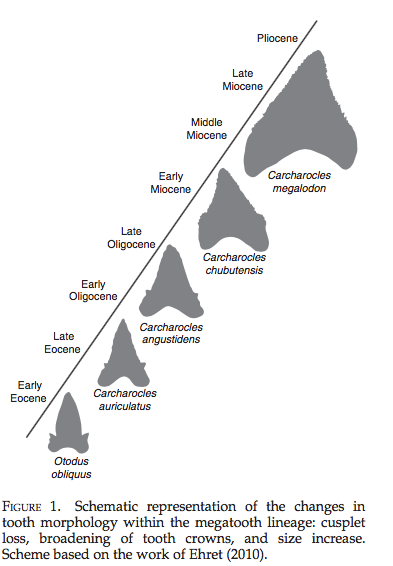
No teeth. Sharks repeatedly shed and replace teeth. Go beach combing and you are likely to uncover teeth from sharks that dwell in the area. We know about Megalodon primarily through fossilized teeth. Although much to my amusement, fossilized poo, called coprolites, are also attributed to Megalodon. A couple of vertebra columns have also been discovered. These Megalodon teeth date from 23 million to 2.6 millions years ago. After that, zero Megalodon teeth. So if Megalodon existed now we would not only see Megalodon teeth all over today, as we do for other sharks, but with would have fossilized ones from the last 2.6 million years. By the way, Megaldon teeth are pretty recognizable and distinctive, beyond just size, from other extinct sharks and the Great White. Researchers would not be confused if a tooth was from Megalodon.
No bite marks. Although much rarer than fossilized teeth, fossils also exist of whale bones with Megalodon tooth slashes and bites in them. We have none of these type of fossils from the last 2.6 million years. There is also no contemporary evidence from carcasses or bodies of whales of bite marks or wounds consistent with a large shark like Megalodon.
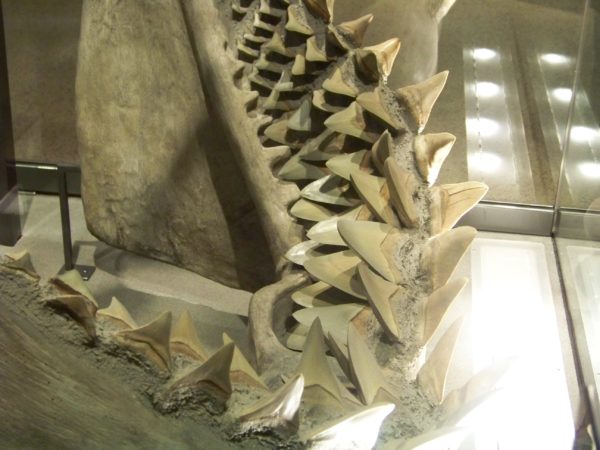
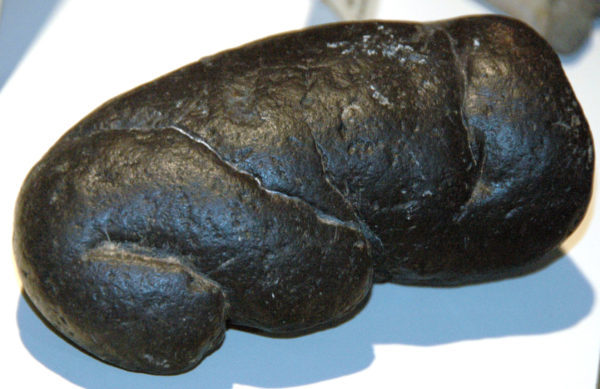
Not lurking in the depths. Everything we know about Megalodon suggests it was a large shark preferring tropical/subtropical warm waters. Indeed, one hypothesis for its extinction was that the oceans got colder. This warm temperature preference means that Megalodon is not hiding in the unexplored, deep and cold parts of the oceans that we have not explored. Megalodon would literally be near the surface in plain sight.
Huge sharks exist: Huge sharks like sleeper, Greenland, basking, whale, Great White, and 7-gill are practically seen every day. They all are very big and often mistaken for a Megalodon. A group of colleagues and I actually researched how big some of these actually can get. But none of these are nearly large enough to come close to the estimated lengths of a Megalodon nor are their shapes consistent with what a Megalodon would like like. Update: as noted below the largest known whale sharks actually do obtain Megalodon lengths.
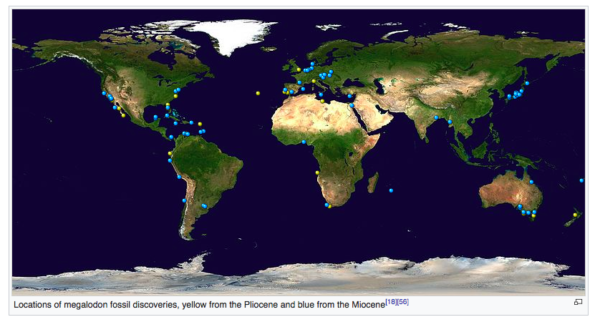 Different oceans: The oceans with a massive ocean predator like a Megalodon would look a lot different structurally. What do I mean? Without going into all the specific science here, large predators have a huge influence on ecosystems and food webs, especially prey items. When we look at ocean ecosystems and food webs there is no evidence that they could or do support a massive ocean predator. Again, one of the hypotheses for the extinction of Megalodon is that a changing ocean around 2.6 million years ago could not produce enough food for a massively-size carnivore like Megalodon.
Different oceans: The oceans with a massive ocean predator like a Megalodon would look a lot different structurally. What do I mean? Without going into all the specific science here, large predators have a huge influence on ecosystems and food webs, especially prey items. When we look at ocean ecosystems and food webs there is no evidence that they could or do support a massive ocean predator. Again, one of the hypotheses for the extinction of Megalodon is that a changing ocean around 2.6 million years ago could not produce enough food for a massively-size carnivore like Megalodon.
1 Megalodon, 2 Megalodon, 700,000 Megalodon. For Megalodon to have existed 2.6 million years since the last known fossil tooth, there would need to be a sustainable population. Based on its size (you can see how this is done on my Kaiju post) we would expect global numbers, if we assume the largest Megalodon females get is 65.5 tons, of near ~700,000-1.5 million. A lot of assumptions here. Since we don’t have a relationship for shark abundance and size, I used the relationship for carnivorous mammals. I also provide estimates for 50% (lower estimate) to 100% (higher) of the ocean being warm enough for Megalodon. Obviously this is crude estimate, but the point here is that there would be quite a few Megalodon in the oceans. Now their numbers might be quite a bit less if Megalodon was going extinct. But in the modern oceans, the primary way large marine animals go extinct is by human hunting. Megalodon should be in nets and markets if this was the case. Which brings me to my next point…
Underestimated commercial interests: If a 50-ton shark existed in the ocean, then commercial fishing operations would ensure Megalodon would have been found and on plates throughout the globe. Currently a pound of Mako is running $30 per pound. An average size Megalodon would bring in $3 million dollars at this price.
Fake documentaries and videos: Many people still think Discovery Channel’s fiasco of a media is real documentary. It was not. Indeed, the original documentary actually had a too short and too hidden disclaimer. Snopes has, as always, a great post about how this is fake. Also the fake video of a Megalodon was actually a sleeper shark.
Government and scientific coverup: I see this coverup language brought up a lot in discussions about climate change and other controversial topics. I think this stems from a couple areas of misconception about how science is funded and how scientists interact. Science is funded through multiple ways for scientists affiliated with universities, similar research institutions, or independents. Government and corporate scientists are often funded by the institution and see more oversight. Most funding for the former type comes from either foundations or the government. You submit a grant and based on the quality, relevance, and importance of the proposed research you get might get funding. This funding obviously dictates the larger theme of the research but does not dictate the findings, results, and conclusions of the research. The concept of academic freedom, a scholar’s freedom to express ideas without risk of official interference or professional disadvantage, is by far one of the most cherished rights we have as scientists. Many scientists would not work for institution or accept funding that would infringe upon this right. I know of scientists who do research without funding even to pursue a course they are interested in. Also, a government conspiracy to hide science would never be tolerated. Just look at the response from scientists to the current administration’s attacks and attempted cover up of climate science. Second, there is no annual meeting where scientists meet to agree on what in the field to believe in or not. Each scientist evaluates the evidence and data independently and draws the conclusions. Consensus is reached when these scientists independently reach the same conclusion because the evidence is overwhelming. Scientists actually thrive on disagreeing with one another. Not about big things like if Megalodon went extinct or not, but why Megalodon went extinct. I will finish by saying that if Megalodon still existed its discovery would greatly propel a scientific career.







“I know of scientists who do research without funding even to pursue a course they are interested in.”
Indeed, that describes most of us!
Great article. Might shatter some dreams though :D.
For the record, however, whale sharks do get up to 18-20 m apparently (citations in the Sizing Giants paper, or the 2016 Red List assessment for whale sharks). I’ve seen sharks of up to ~14 m.
Well said and I’m sharing w/ my students (since they don’t like to listen to me when I tell them this). However, I doubt the person who REALLY needs to see this, will. too bad.
There are good hints that maximum size might exceed 18 m based on Leder et al. 2016 and the existence of larger teeth in private collections than those available to scholars.
If you got the size of the megalodon from the teeth how does that tell you what temp waters it swam in i mean you guessed the size of the shark by the size of teeth i do belive it is extinct but its just confusing to me.
Yeah so I am calling BALDERDASH on that ancient fossilized white shark poop.
The rest if this article is nice. The poop? Feh.
New article title:
How We Know Fossilized Megalodon Poop Doesn’t Exist?
Dear Dr, M.
You write “…a really good write up on how we know Megalodon actually does not exist is not on the interwebs.”
This is an older article from 1998, which addresses most common arguments still used today:
“A Critical Evaluation of the Supposed Contemporary
Existence of Carcharodon megalodon, by Ben S. Roesch
http://web.ncf.ca/bz050/megalodon
Now your great article can be added to my collection as well. Thanks.
After the film “The Meg” based on Steve Alten’s “Meg” is released this summer, I’m sure we will witness an even greater surge of meg-lives-advocates…
I work in an aquarium and love meeting the kids who believe the megalodon is still out there. We do talk about the possibility (or lack) of the sharks still surviving. Their love of the ocean is what inspires me and makes me hopeful about confronting the real monster coming.
Government cover-up is the most hilarious argument used by all the voodoo groups; alien encounters, UFOs, Big-Footers, Kennedy assassination kooks, etc. Stop and think; what has Washington EVER been able to keep secret? Logic would tell you if they can’t cover up their rapes and sexual molestation shenanigans, how in the world are they going to cover up a brunch with ET?
I have a megaladon tooth on my bedside table. I don’t know why but I just love that thing. I’ve seen 12+ sharks while out surfing. Believe you me that’s plenty big when you’re in their swimming pool.